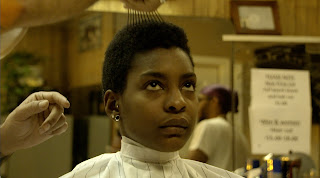Recently, when asked about Kate and Anthony’s future and requests for a possible spinoff based on the Netflix streaming series, award-winning Bridgerton producer Shonda Rhimes said the following problematic statements:
“I don’t know what story could be told. The beauty of this show is that we get to tell a complete love story from beginning to end with a happy ever after every season. We don’t have to manufacture reasons why a couple can’t be together, we let them have their actual happy moment. And so, there are no spinoffs to be had because we’d have to find some way to break the couple up, and that feels very artificial..... maybe we could just watch them sit together.”
As previously stated in essays Part 1 and Part 2, the second season of Bridgerton focused on a lackluster triangle rather than the leads themselves— Anthony Bridgerton and Kathani Sharma-Bridgerton. That in itself was terribly bad manufacturing on their part. Thus, fans deserve a deeper continuation on their couple’s journey of love, a love that does not stop at an unseen wedding or an implied six month honeymoon. If these writers can devote extra time to the Featherington drama purposely cuts into the main reason for adapting The Viscount Who Loved Me, then spare moments for those that the protagonists lost.
A lot of excitement exists for Bridgerton’s first returning couple and so much can be built from Anthony and Kate’s union.
This notion that “happily ever after” ends where a story could potentially go is absolute nonsense. Rhimes, so accustomed to having her couples experience short lived happiness anyway, obviously requires more lessons in discussing all factors of romance. In her previously produced shows, she always makes it seem that there only two phases— the loving buildup and then surprise death/breakup. Although she doesn’t write on certain shows, especially Bridgerton, her trademark is branded throughout. She thrives on drama as explosive and destructive as it can be managed. Perhaps adapting Julia Quinn’s novels offers her own personal tropes a challenge. Except, it seems such limitations cannot allot her the ability to expand beyond her normal storyline approaches.
In these interviews, Rhimes cringes at this lack of authority, not being able to permanently hurt these fictional characters. However, she can have them experience pain in multiple ways. We saw Kate’s brutal humiliation over and over: Anthony setting up that nasty trick with Thomas Dorset at the races, Edwina being fine with it, Kate being cruelly sidelined as Anthony proposed to Edwina right in front of her, Anthony repeatedly speaking of his lust for Kate which rightfully confused her, and Edwina rolling out of character to viciously maul Kate and Lady Mary (supposed loving mother of both daughters) not doing anything about it. Also some members in Anthony’s family had the tendency to be either overly harsh with him or make unfunny jokes at his dispense.
Furthermore, the “maybe we could watch them sit together” is insulting. Most of Kate and Anthony’s love story comprised of nonverbal interactions. She knows this. The audience knows this. To say that you would rather create more quiet moments between them and not necessarily work on giving them any dialogue is a huge red flag— a sign of lazy, uninventive writing. It is not smart or wise to backburn a charming, charismatic pairing that has yet shown us all that they can be.
In Quinn’s The Viscount Who Loved Me, the story truly begins after Kate and Anthony are married. Lots of juicy tidbits can be taken from there. Room can be made for finally divulging Kate’s childhood traumas, Anthony apologizing onscreen for hurting Kate the way he did (maybe a pseudo moment triggers Kate’s memory of Anthony’s proposal to Edwina), Kate’s first pregnancy encouraging Anthony’s heartbreaking flashbacks to his grieving mother’s agony, and etc. The possibilities beyond “just breaking them up” are endless. Heck, a spin off has the promise to center Kate and Anthony’s growth, vulnerability, grace, and humility together. Bridgerton is not an adaptation acquired by Disney. The characters still have internalized issues to deal with, to channel through. That doesn’t end because they’re wearing wedding rings. Or have lots of great sex. Already, many women of color see themselves in Kate, especially South Asian women who rarely have the opportunity to have this kind of beautiful brown woman media representation on a popular series. Imagine how even more thrilling it could be with her leading a whole series and incorporating her heritage further— which should have been properly conducted in season two.
Jonathan Bailey and Simone Ashley are incredible, top tier actors that can render scripts into gold (even when the scripts are not that). They deserve the opportunity to showcase the internal workings of a marriage, all its complex nuances in addition to the intimate pleasures and joys. If these show runners and writers still refuse to give them any more depth worthy of their talents, they will come to regret it. After all, both have big projects set for the future. It would be nice if the series appreciated them as others strike an otherwise very hot iron.
So please, get a clue, Shonda Rhimes & Co. You’re all becoming increasingly out of pocket and out of line.














